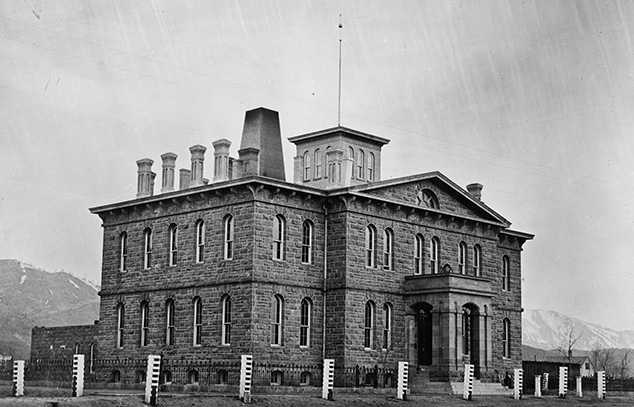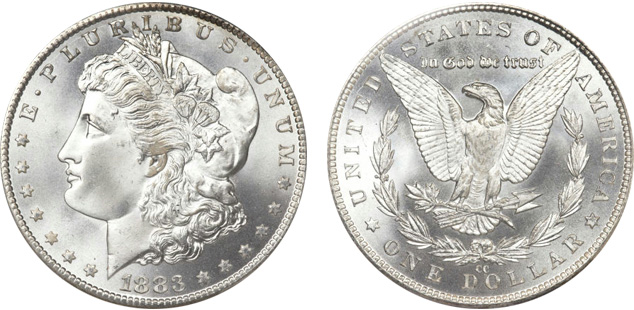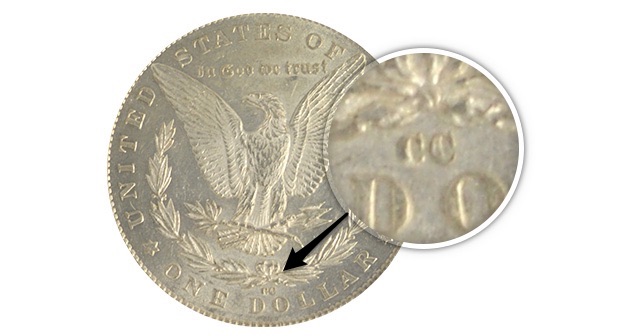
Coins from the Carson City Mint, with a CC mint mark, are especially prized with U.S. coin collectors. Learn why the CC mint mark is special.
The Carson City (CC) mintmark designates coins struck at the branch of the U.S. Mint in Carson City, Nevada. The government had a very practical reason for establishing this branch in 1869: the nearby Comstock Lode produced an abundance of precious metals that could get pressed into U.S. currency, so gold and silver did not have to travel far.
When compared to other U.S. mint locations, like Philadelphia, San Francisco, Denver, and New Orleans, Carson City might seem an out-of-the-way place to establish a branch. However, the National Park Service 1 recounts that the mine and all of its operations actually ended up urbanizing and modernizing the area. Capitalists who invested in gold and silver also invested in the Carson City area during the gold boom times of the late 1800s.
A Brief History of the Carson City Mint
The Carson City Mint 2 opened in 1869, pressed the first coin with a CC mintmark in 1870, and continued as a branch of the U.S. Mint until it lost its formal status in 1899. During its time of operation, the mint produced precious metal coins with a collective face value of almost $50 million dollars. The mint produced Gold Double Eagles, with a face value of $20, American Eagles, worth $10, and Half Eagles, worth $5. The mint also produced the Carson City silver dollar, along with half dollars, quarters, dimes, and 20-cent pieces.
Once the nearby Comstock Lode mines stopped producing as much gold at the end of the 19th century, Carson City lost its formal mint status as a branch. For years afterward, the building still served as an assay office. Since 1941, the building has been the site of the Nevada State Museum. One of the original coin press machines can still be seen in this museum.
Why Are Carson City Gold and Silver Coins Coveted?
Today, collectors are often eager to buy gold and silver coins with the Carson City mintmark because of their collectible value—because the mine was only open for a short period, the coins minted there are in especially limited supply and high demand. In comparison, while the Carson City branch was open for less than three decades, the Philadelphia Mint 3 has been in operation since 1792. As a larger coin production facility and located near much larger population centers at the time, Philadelphia sent a lot more coins into circulation. The chance that they survived into modern times is greater, so they are, theoretically, more common and more widely available than the briefly-opened Carson City-minted coins.
Carson City Silver Dollar

According to the U.S. Mint 4, the Morgan Silver Dollar, also called the Carson City Silver Dollar, was the most commonly pressed coin in Carson City. For example, a non-mint 1889-CC Morgan Silver Dollar is quite valuable. A collector purchased an MS-68 example of this silver coin for almost a million dollars in 2013. That’s an increase of over 900,000 from the coin’s original face value of $1.
However, a coin in the MS-68 grade is very rare. In good (G) condition, NGC 5 suggests a price of over $500 for a Morgan 1889-CC. For the same date from New Orleans or San Francisco, with an O or S mintmark, NGC has a value of less than $30. While the difference in value isn’t this dramatic for every coin and date, Carson City coins are commonly scarcer and more valuable than their counterparts from other branches of the U.S. Mint.
The Numismatic Value of a CC Mintmark

The Carson City Mint represents the time of huge gold and silver booms in the United States. Because of these, many Carson City (CC) coins are coveted for their numismatic value. These coins are still considered U.S. currency, but few people would ever buy or sell them for their face value. Most CC coins have a market value that far exceeds their bullion value, making them both an interesting and profitable investment-grade style of coin.


